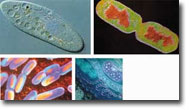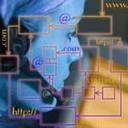
The word "biometrics" is derived from the Greek words 'bios' and 'metric' ; which means life and measurement respectively.
There are basically two types of biometrics:
1. Behavioral biometrics
2. Physical biometrics
There are many examples of biometrics being used or considered in Federal, State, local, and foreign government projects. One use is to provide robust authentication for access to computer systems containing sensitive information used by the military services, intelligence agencies, and other security-critical Federal organizations. Physical access control to restricted areas is another key application.
Biometric system:
Face Multimodal
Fingerprint / Palm Print Retinal
Hand and Finger Geometry Vein
Handwriting Various/Others
Iris Voice/Speaker
Israeli-developed system:
The Israeli-developed system combines questions and biometric measurements to determine if a passenger should undergo screening by security officials.
The trial of the Israeli-developed system represents an effort by the U.S. Transportation Security Administration to determine whether technology can spot passengers who have "hostile intent." In effect, the screening system attempts to mechanize Israel's vaunted airport-security process by using algorithms, artificial-intelligence software and polygraph principles.























